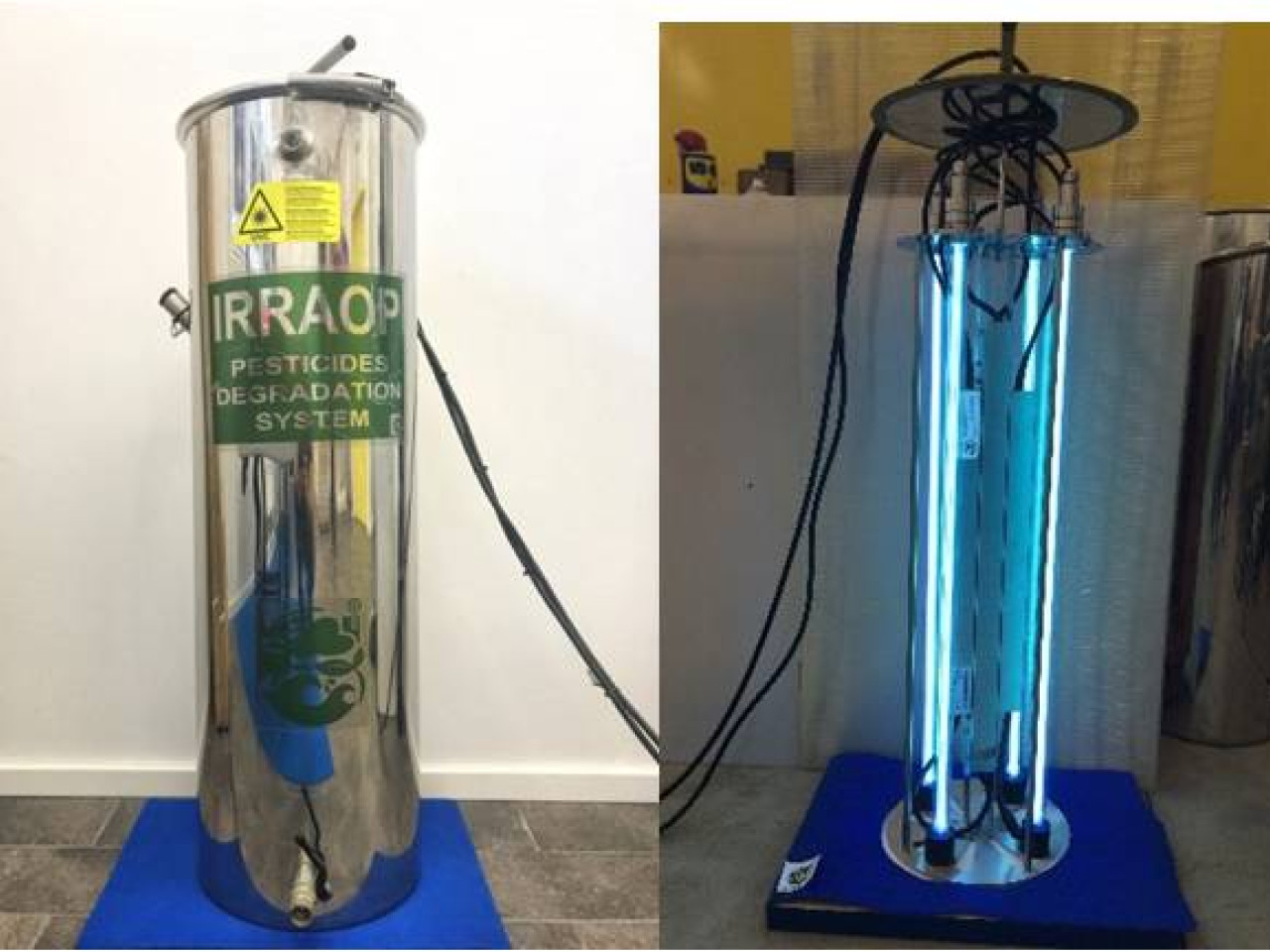Italy is one of the world's largest consumers of pesticides. IRRAOP solves the problem of the management of pesticide residues in sprayer tanks: to date there are no validated and effective systems or services able to avoid the dispersion of these substances in the environment. The prototype is designed and built as an accessory for sprayer machines, able to degrade the organic fraction of the pesticide solution generated both by the residual unused and by the internal washing of the tank. The liquid solution thus treated can be reused as dilution water for subsequent phytosanitary treatments, thus also reducing water requirements.
 Prototype for the degradation of pesticide residues in wastewater used in agriculture
Prototype for the degradation of pesticide residues in wastewater used in agriculture
The IRRAOP system is one of the most promising technologies for the management of agro-pharmaceutical residues: there are no validated or effective systems or services able to avoid the dispersion of these substances in the environment to date
The potential applications are: - stand alone as an independent system for the degradation of pesticide solutions - as an accessory to sprayer machines - integrated with biobed (or other technology) in a service area for cleaning spray machines
Degradation of pesticide residues after field spraying
IRRAOP has been tested in the field in collaboration with two farms within the framework of the Sat-Fruit RDP. The treatment of 9 pesticides among those mostly used in Emilia Romagna was evaluated, using the Irraop prototype in the presence of H2O2. The product set included Imidacloprid, Azoxystrobin, Terbuthilazyne, Dithianon, Cypronidil Fluazinam, Clorpyriphos methyl, Captano and L.A.S. After 8 hours of treatment, the mineralization process was evaluated by measuring the TOC content (Total Organic Carbon) using the Hach-Lange LCK-385 cuvette method and the DR5000 spectrophotometer. For the degradation tests the concentrations recommended by the 9 treatments, diluted to 50 liters, were used, thus simulating the operation of rinsing the tank of an atomizer with a volume of about 800 liters. The concentrations of the pesticides used (IImidacloprid, Azoxystrobin, Terbuthilazyne, Dithianon, Cypronidil Fluazinam, Clorpyriphos methyl, Captano and LAS) in terms of decrease in absorbance, stand at an average value for the first three compounds of 82.15%, in eight hours of treatment, with complete disappearance in one case (Imidacloprid), after only five hours of treatment. In terms of variation of TOC (Total Organic Carbon), the average abatement for the 9 pesticides is 52%.
C.R.P.V. CNR-ISOF Montanari farm Fantoni farm
In the future the system will be further developed on the basis of the needs identified in the field trials or as an optional system of sprayer machines or as an independent system serving a single farm or agricultural associations

